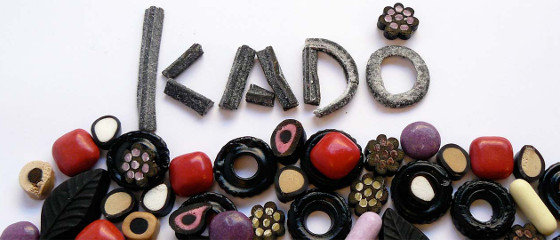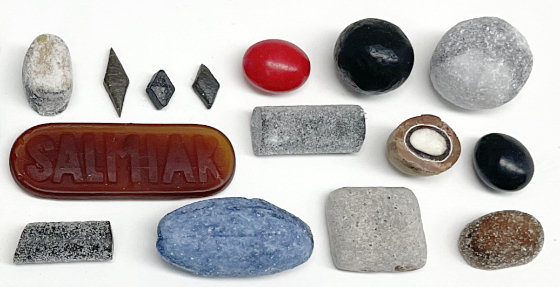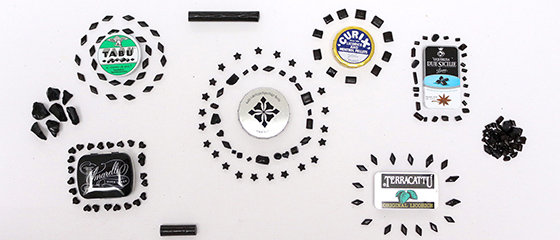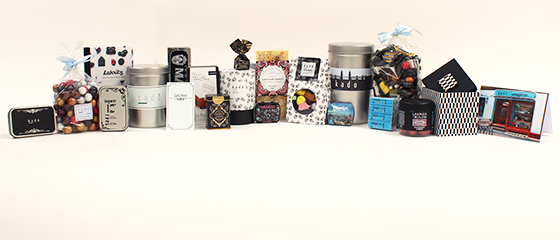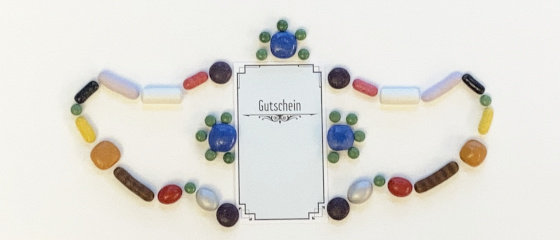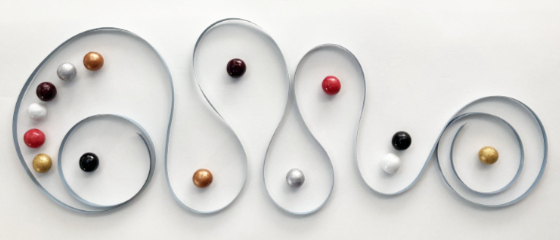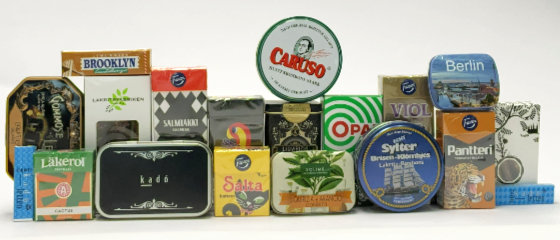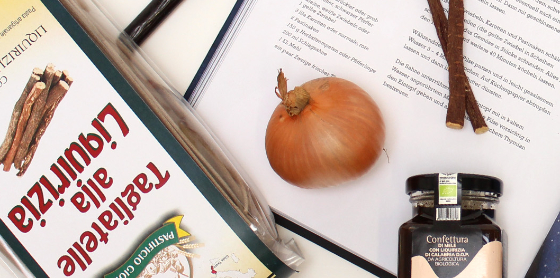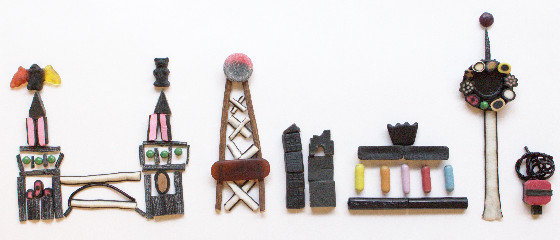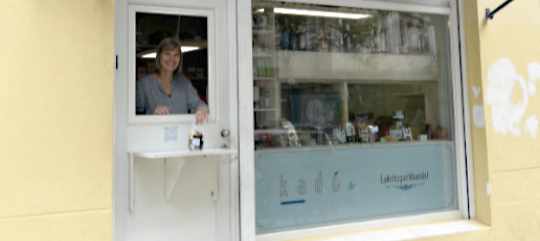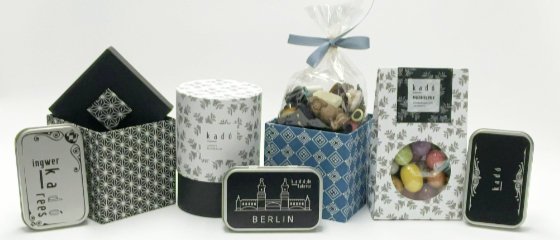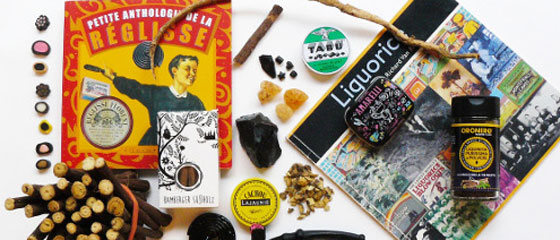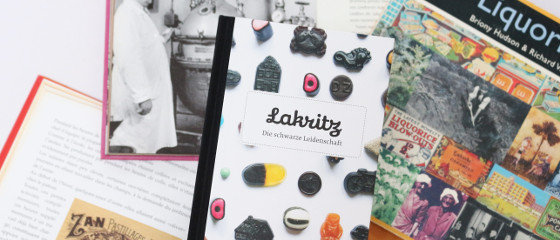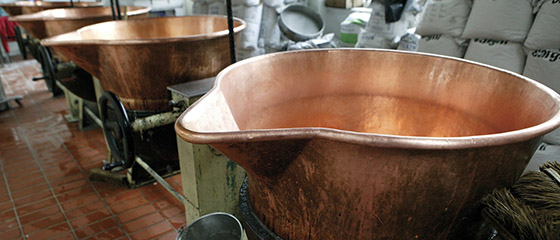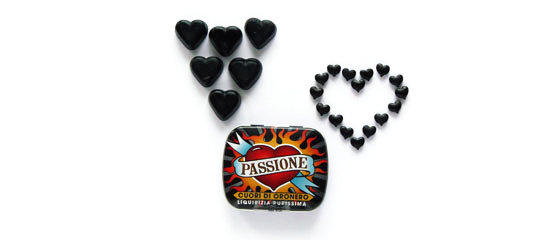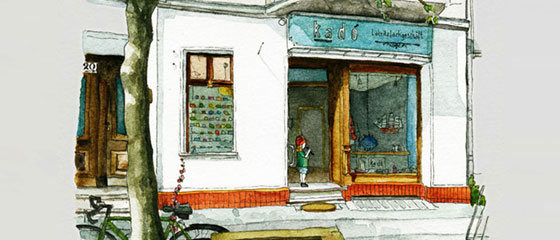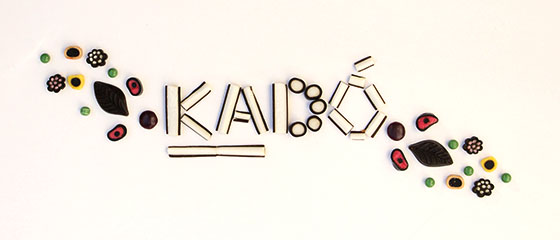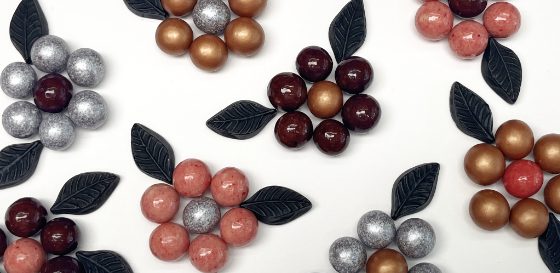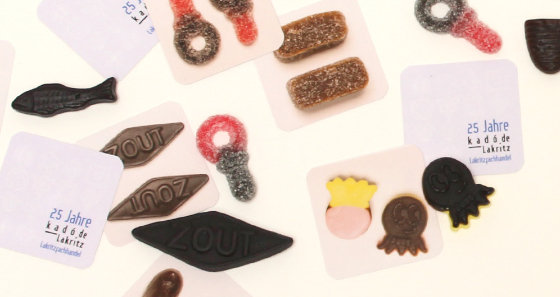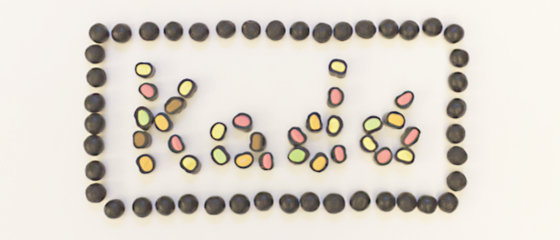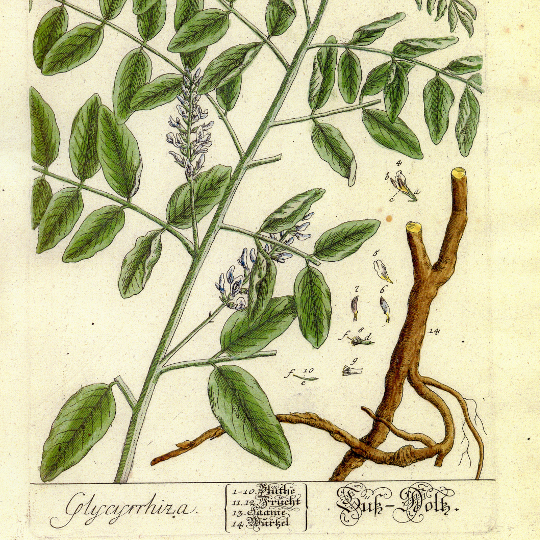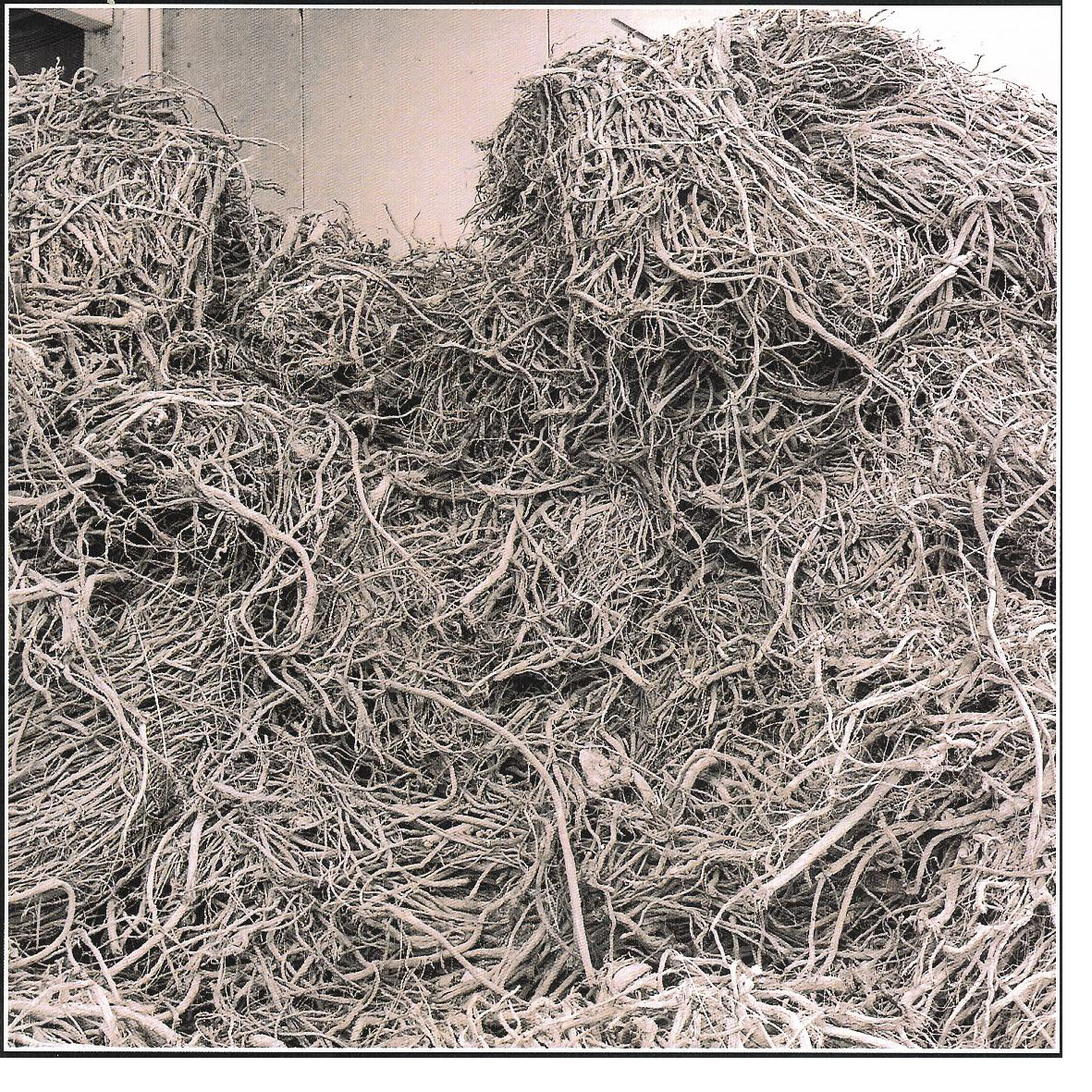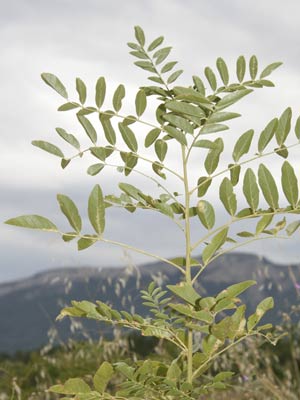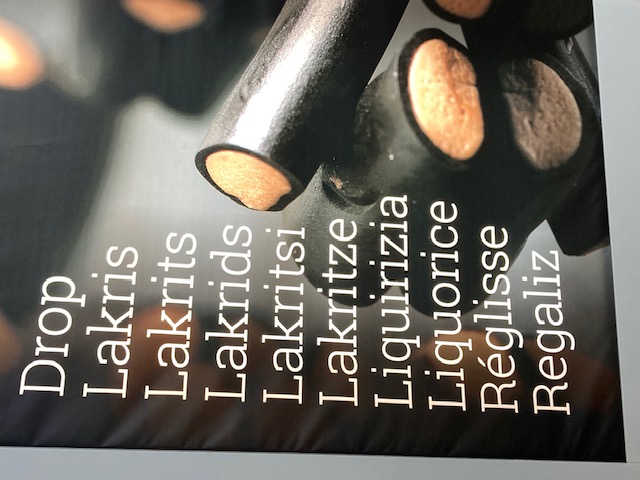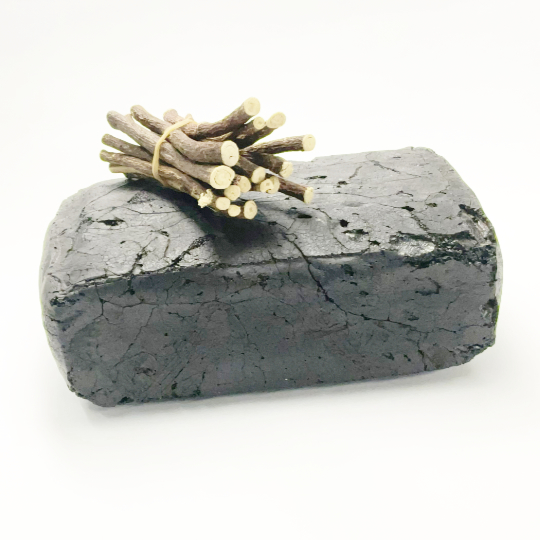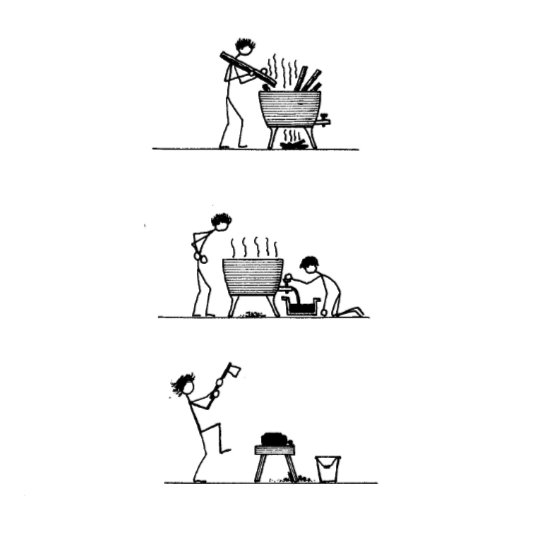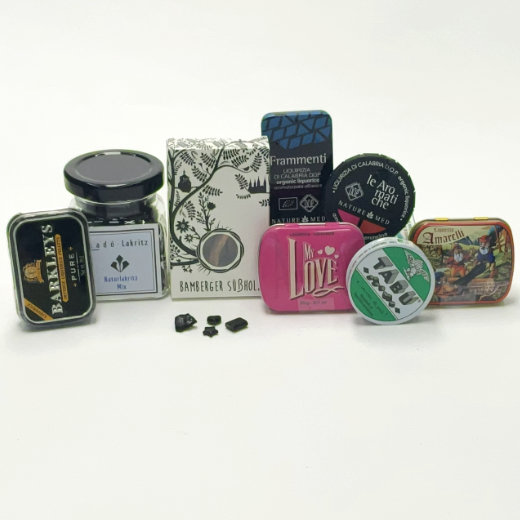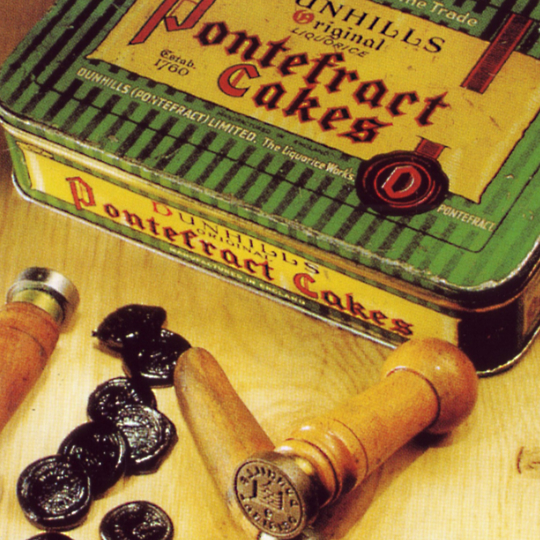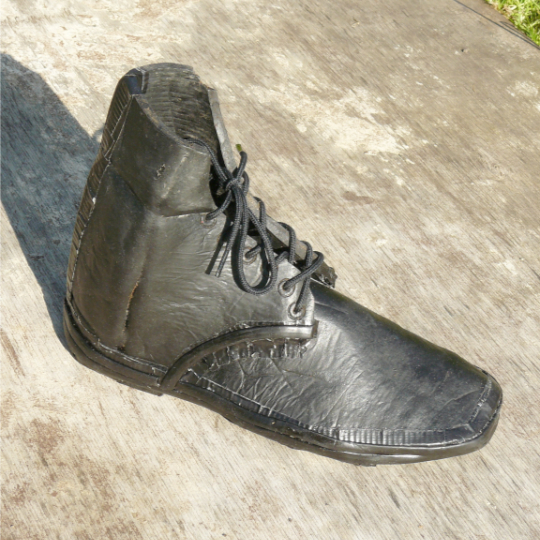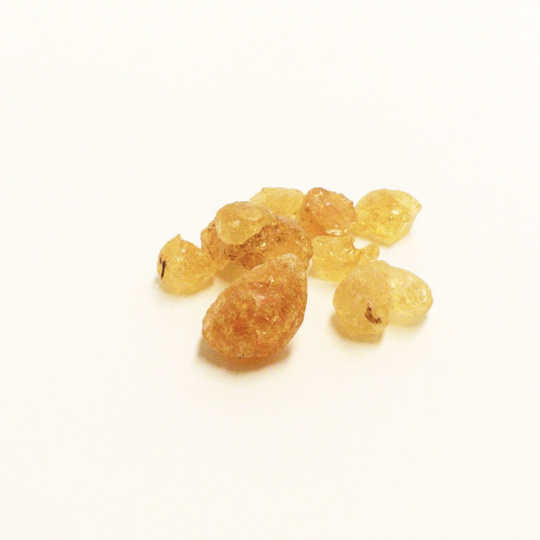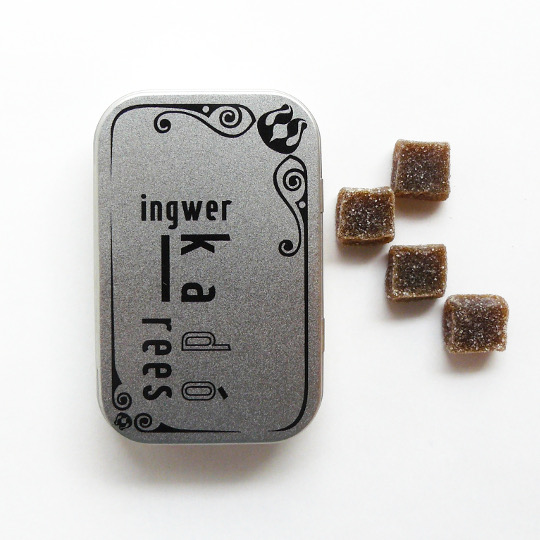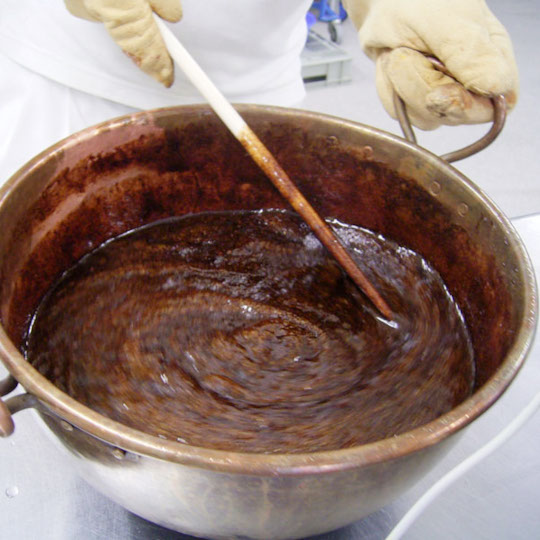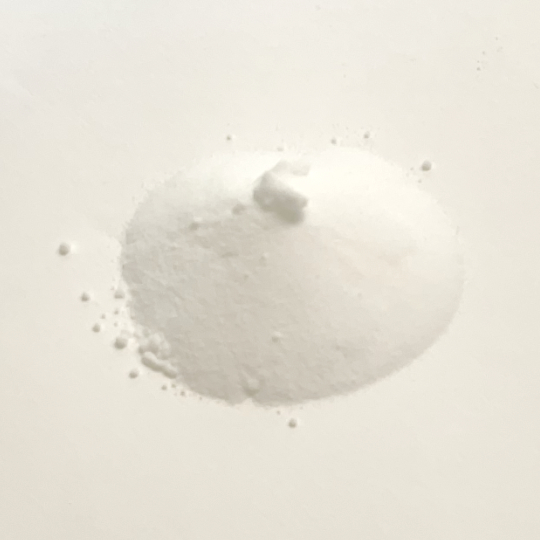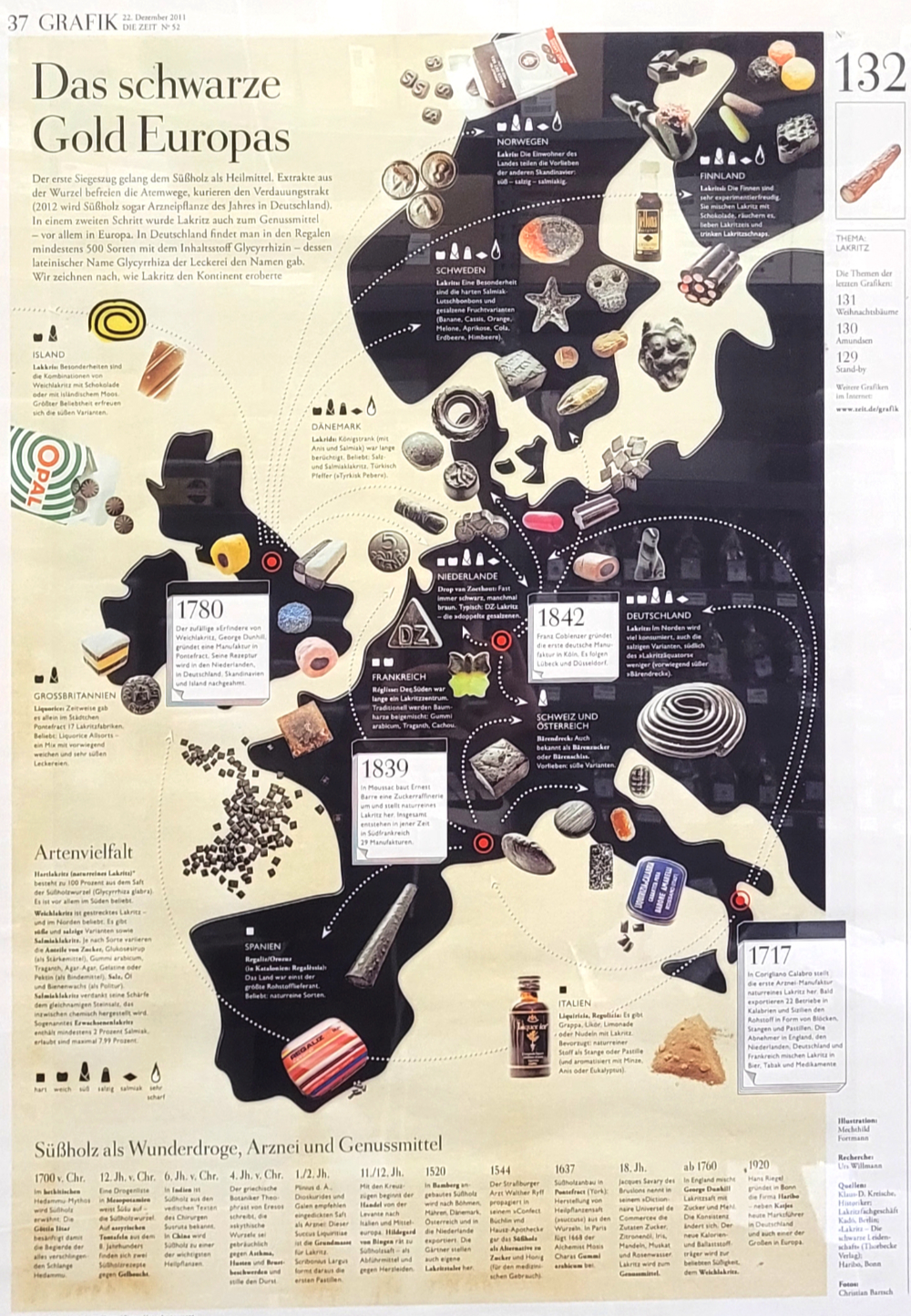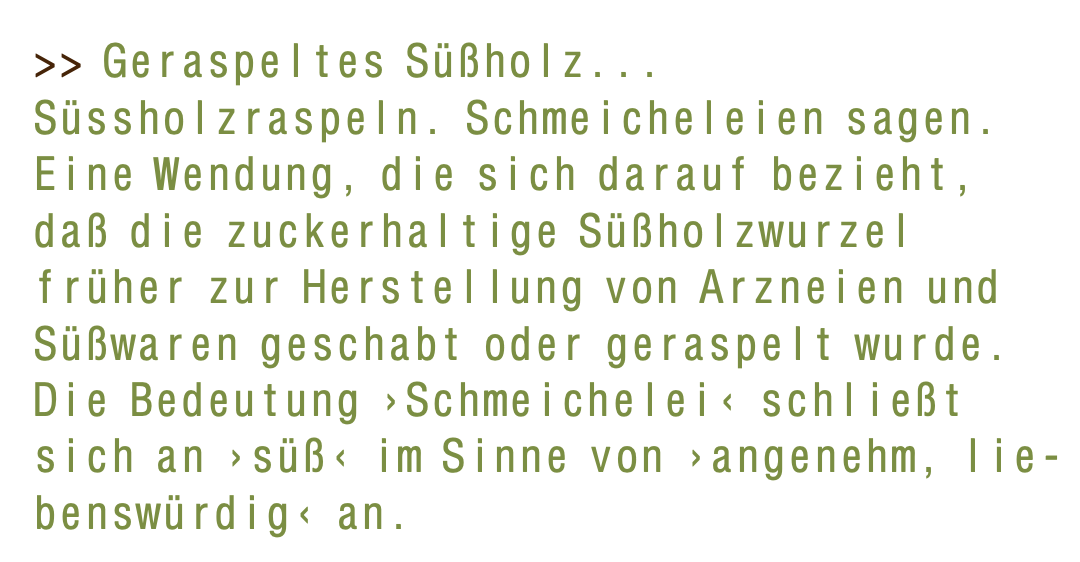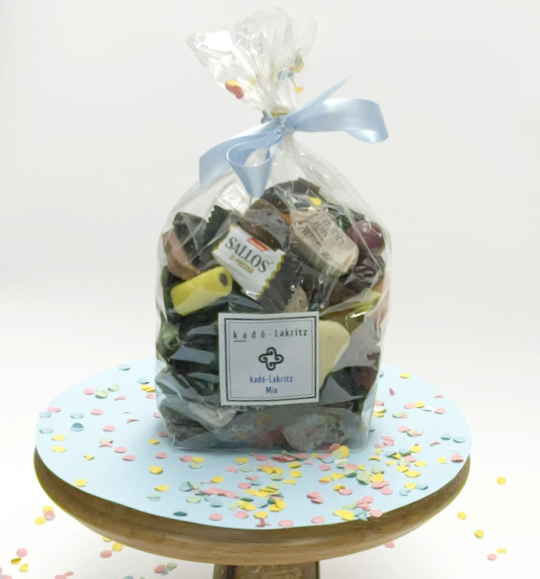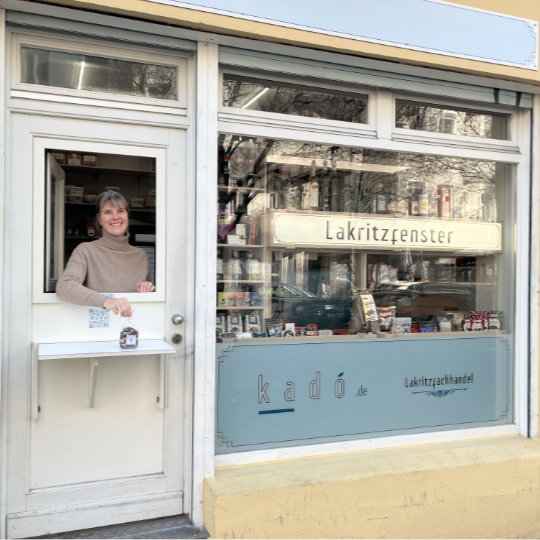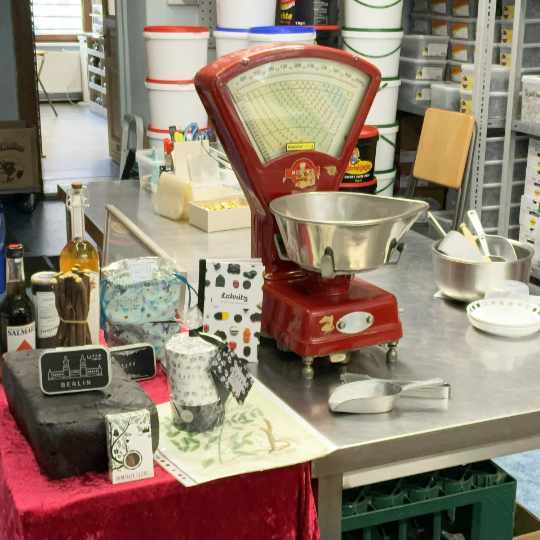All about sweetwood & liquorice
Liquorice and sweetwood
No liquorice without sweetwood. Liquorice is a natural plant product made from the liquorice plant, sweetwood. Glycyrrhiza glabra is the botanical name of the liquorice plant. In Greek, glykys = sweet and rhiza = root. The liquorice bush grows as tall as a man, has small green leaves and purple flowers - this part of the plant above remains unused, see illustration.
For liquorice production, only the taproots of the plant are of interest, which penetrate vertically up to 4m deep and branch out, making harvesting difficult. It can be harvested for the first time after the 4th year. The liquorice plant prefers plus temperatures in winter and has spread to southern Italy, Turkey, Syria and Iran. It also grows wild there.
There is an anecdote that the Amarelli family, who lives in Rossano Calabria for centuries, only started producing liquorice because it became too expensive and time-consuming for them to have this wild weed pulled from their land. They investigated the ‘weed’ and instead of pursuing the desired cultivation of citrus fruits, Amarelli has been cooking Pane Liquirizia, or liquorice bread, since 1731. The ratio is approximately 10:1. This means that ten parts sweetwood are needed for one part pure natural liquorice.
The liquorice loaves are used in the pharmaceutical, perfumery, tobacco and confectionery industries. The latter will be our focus here.

